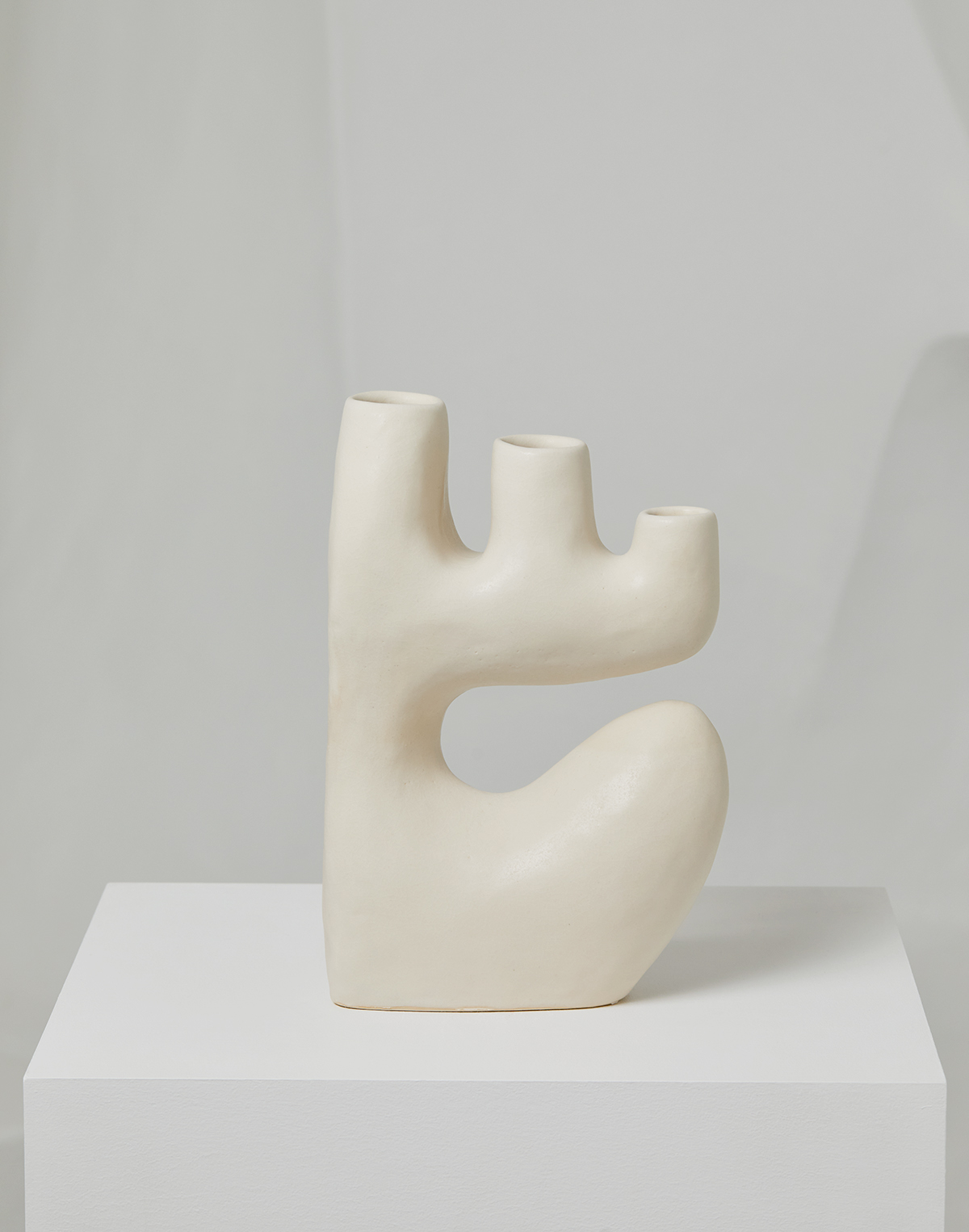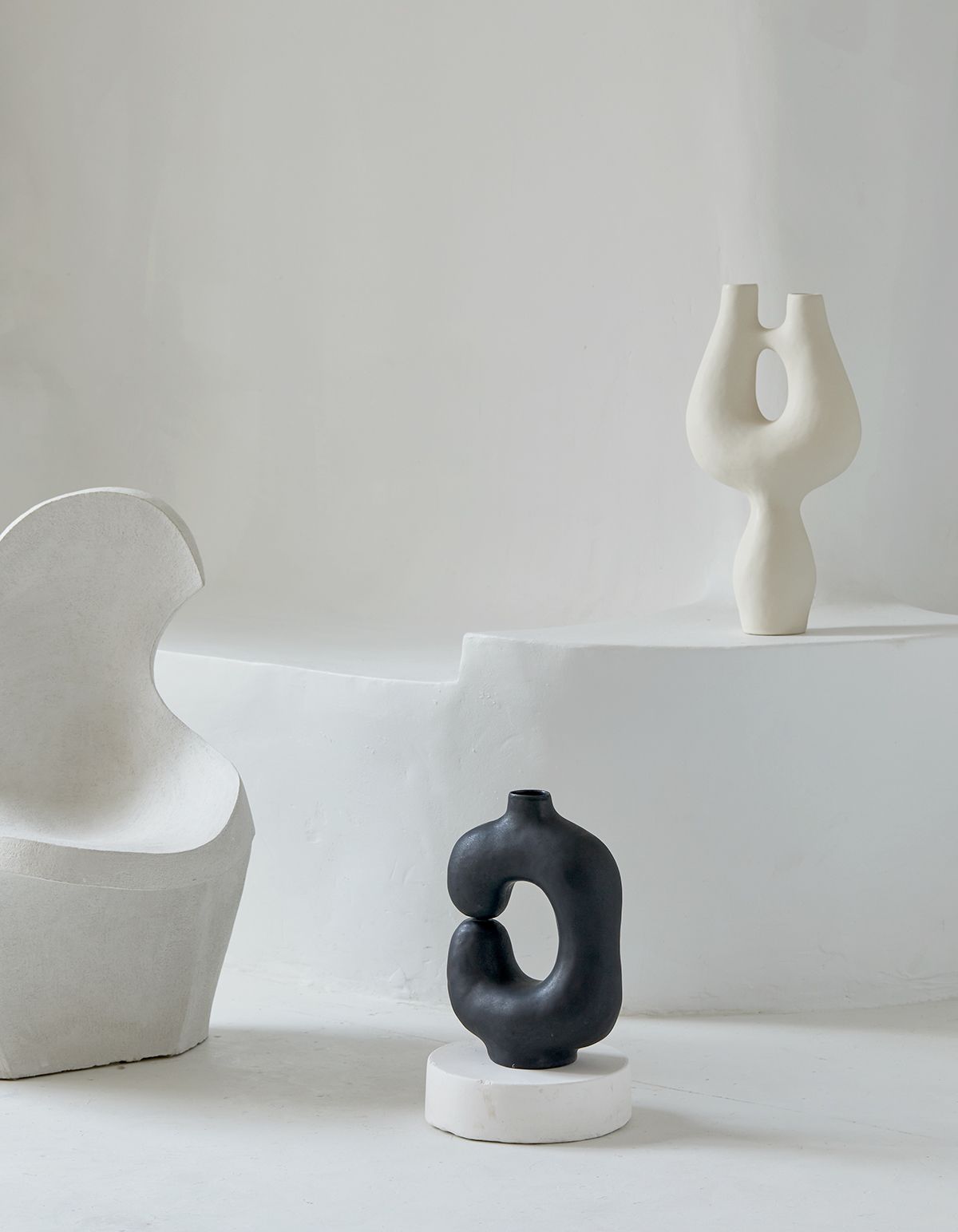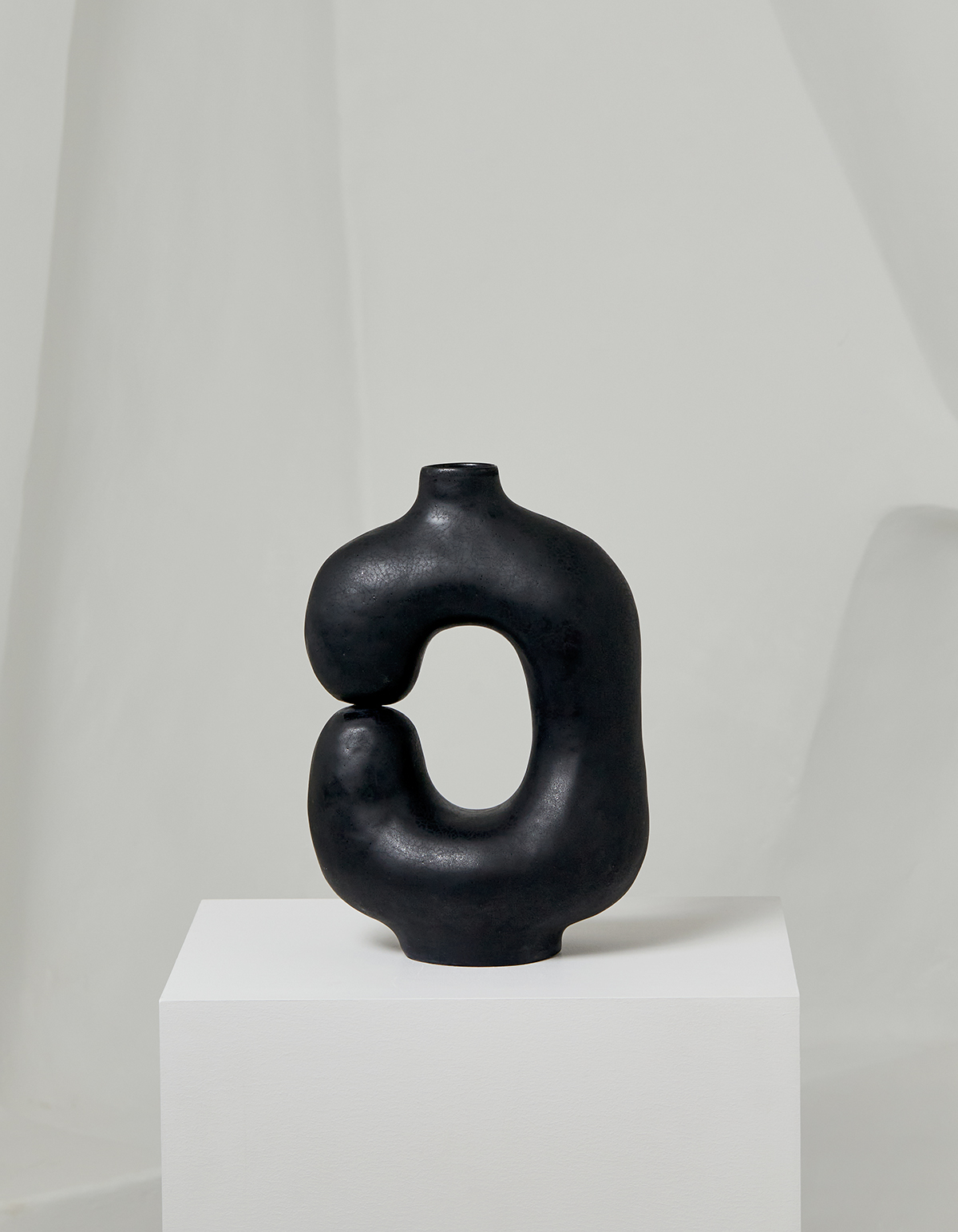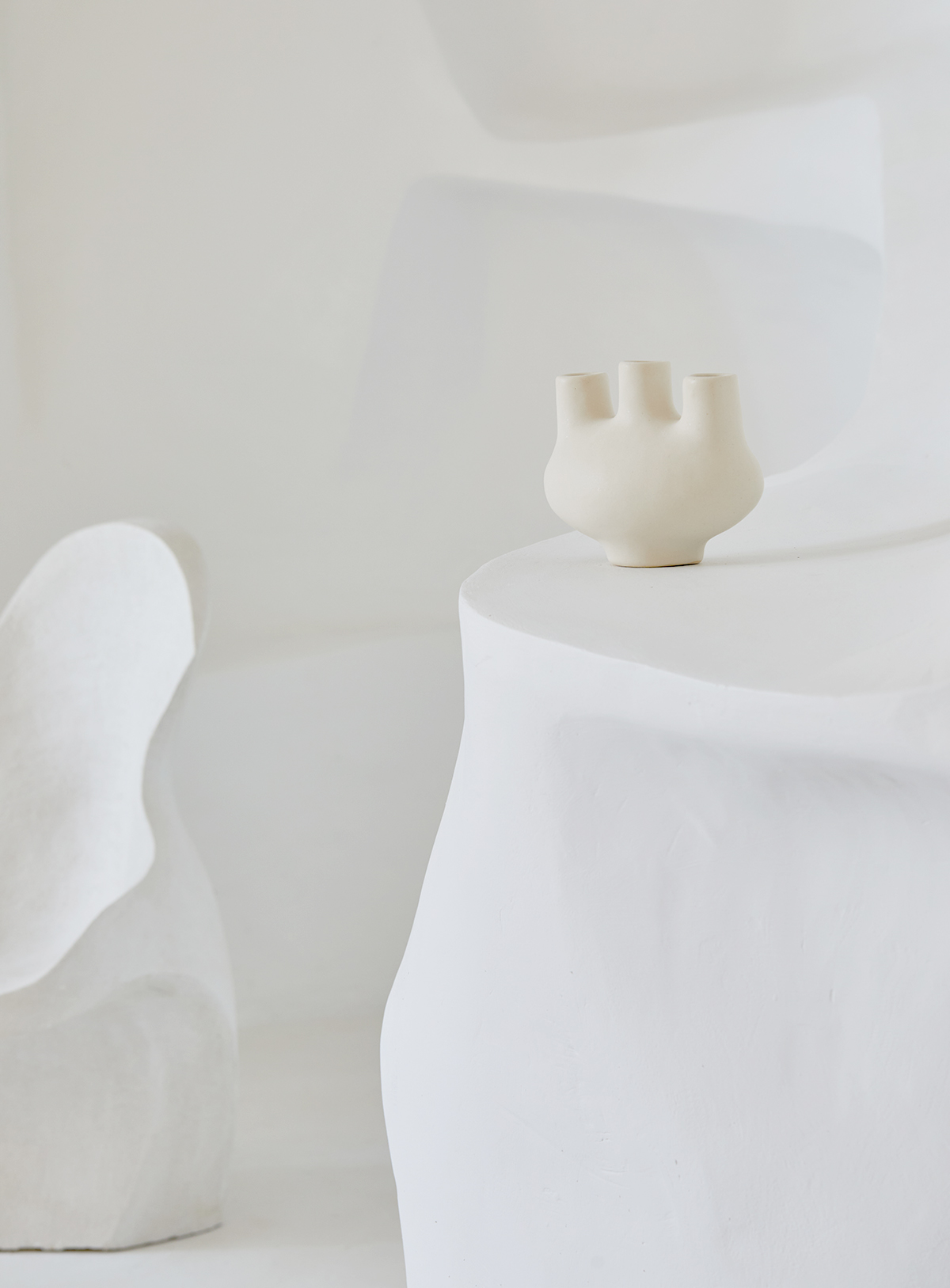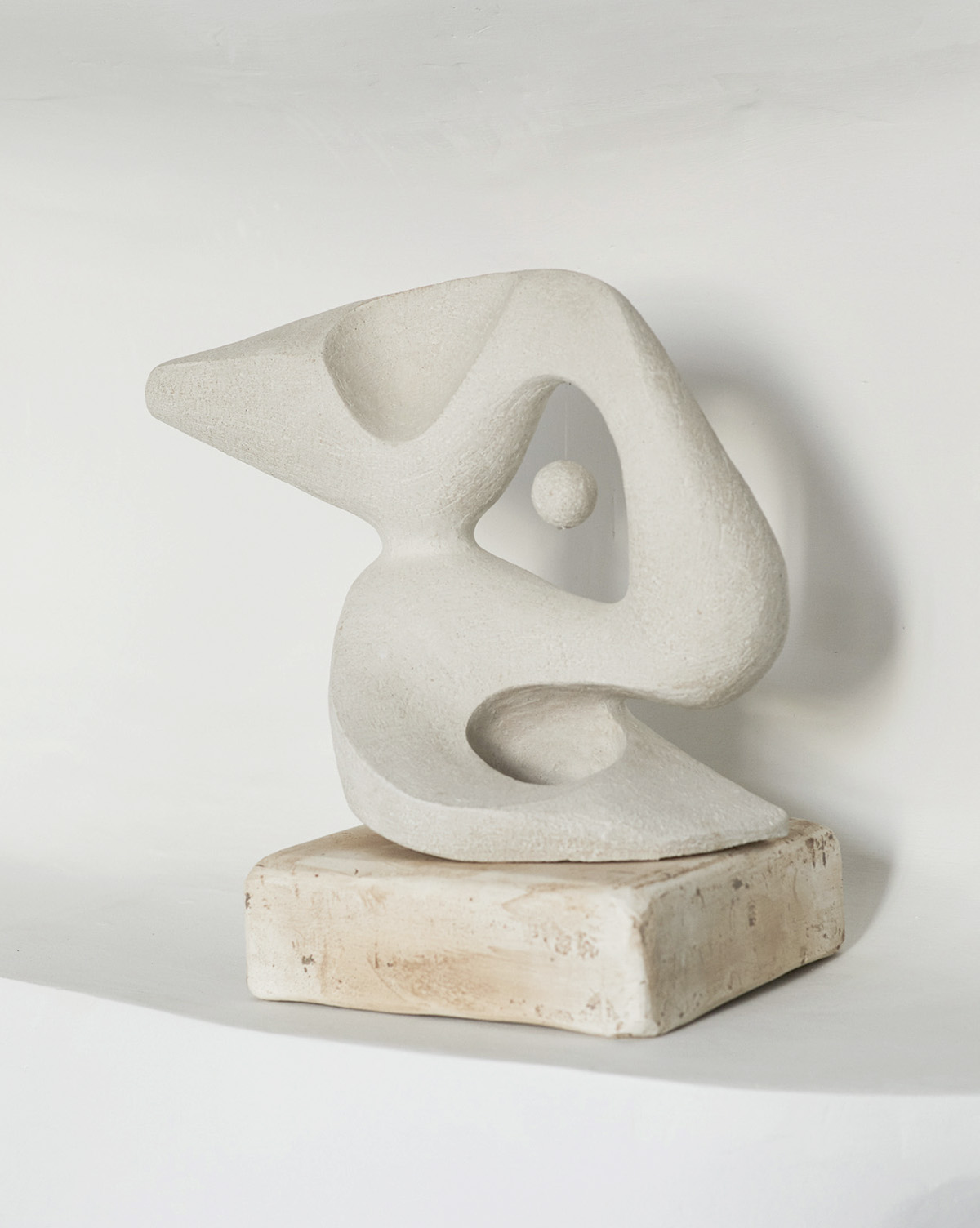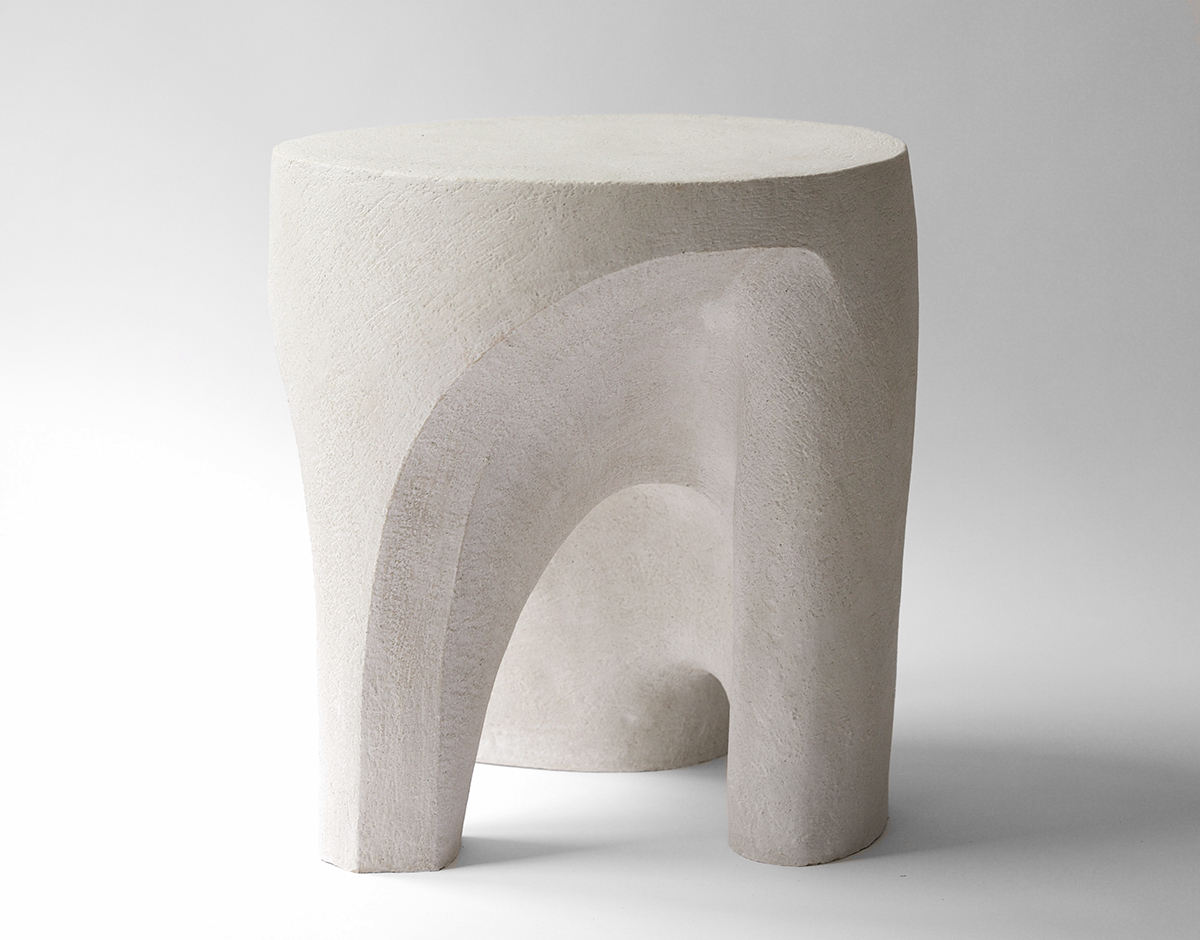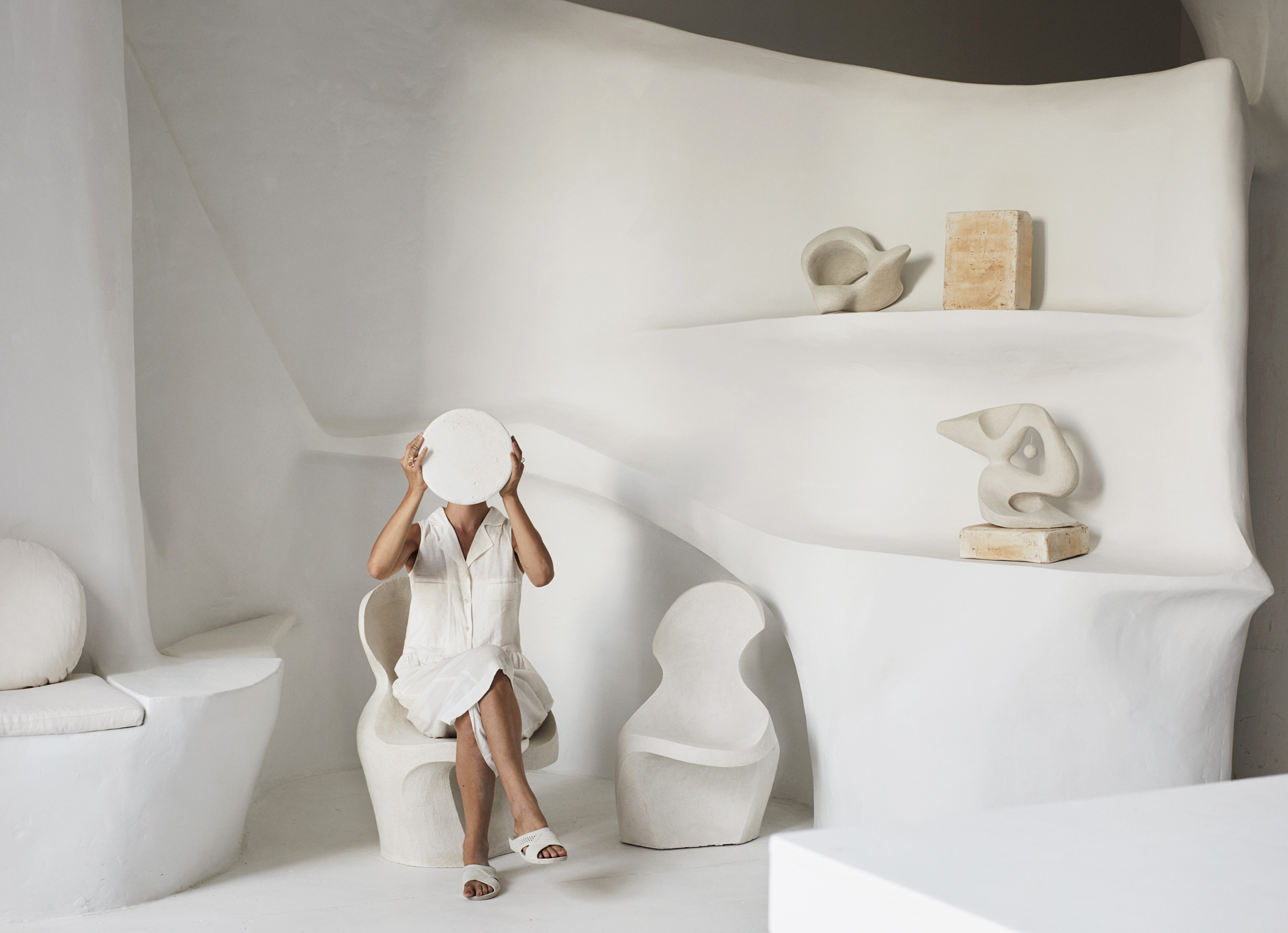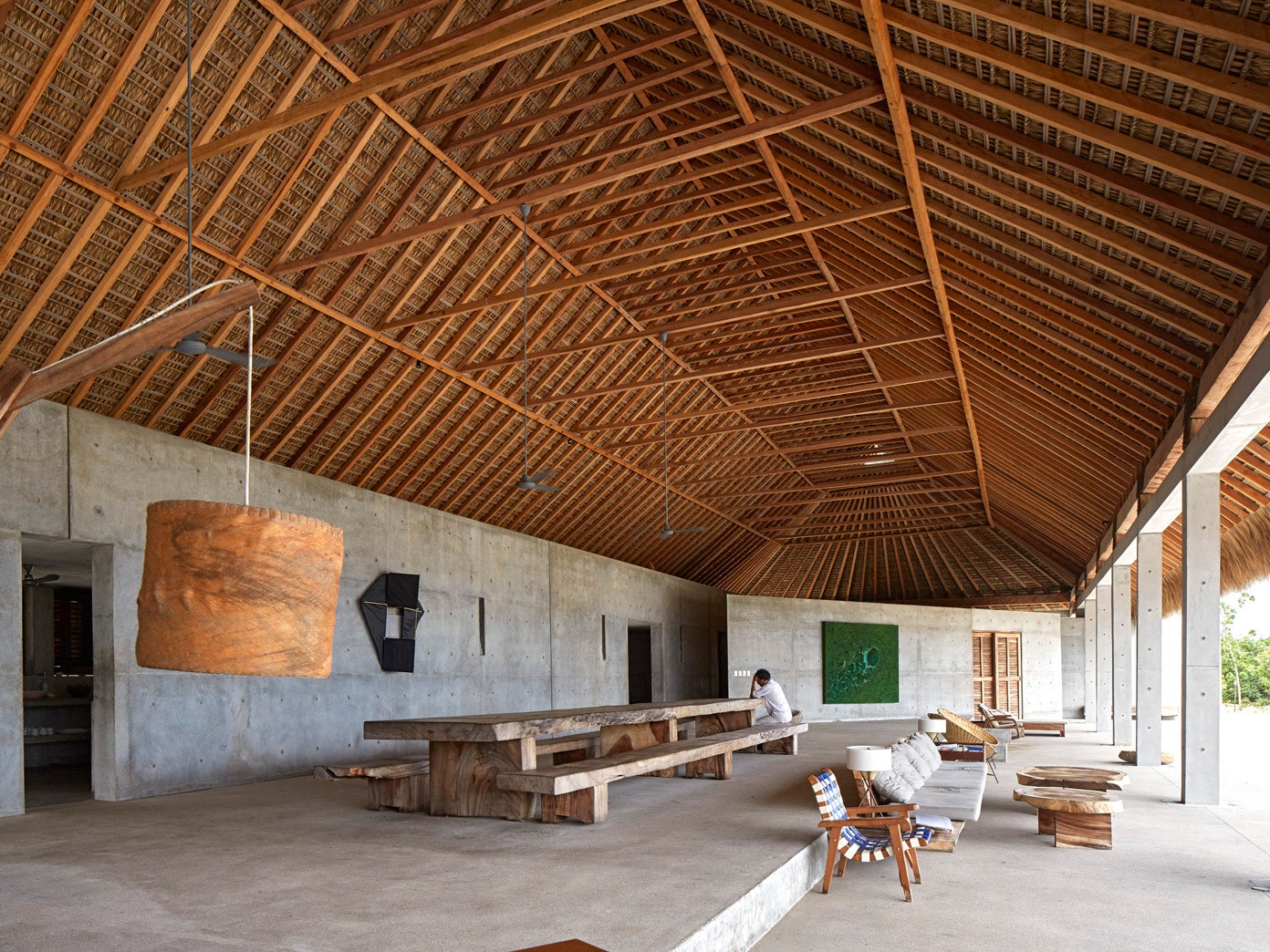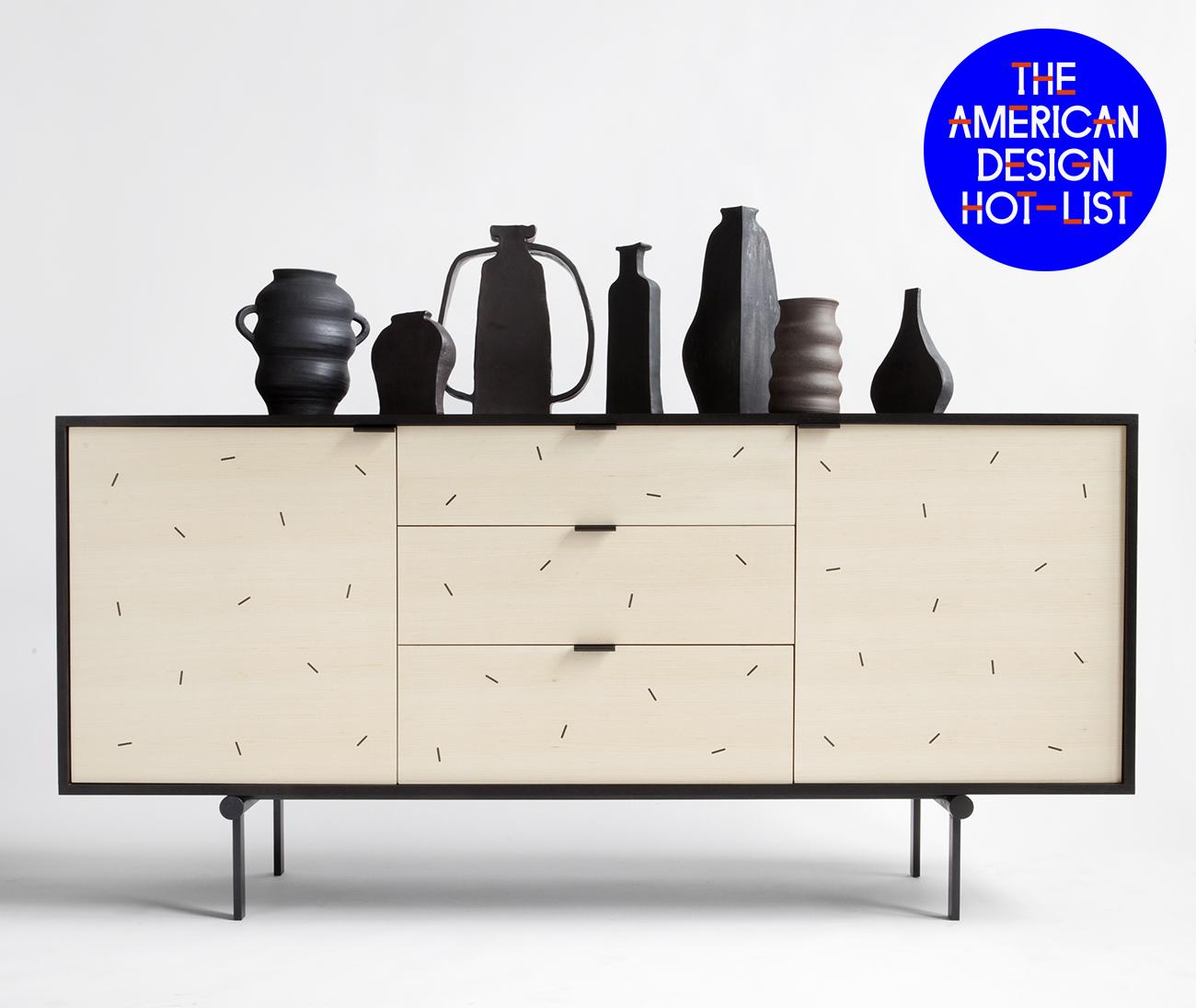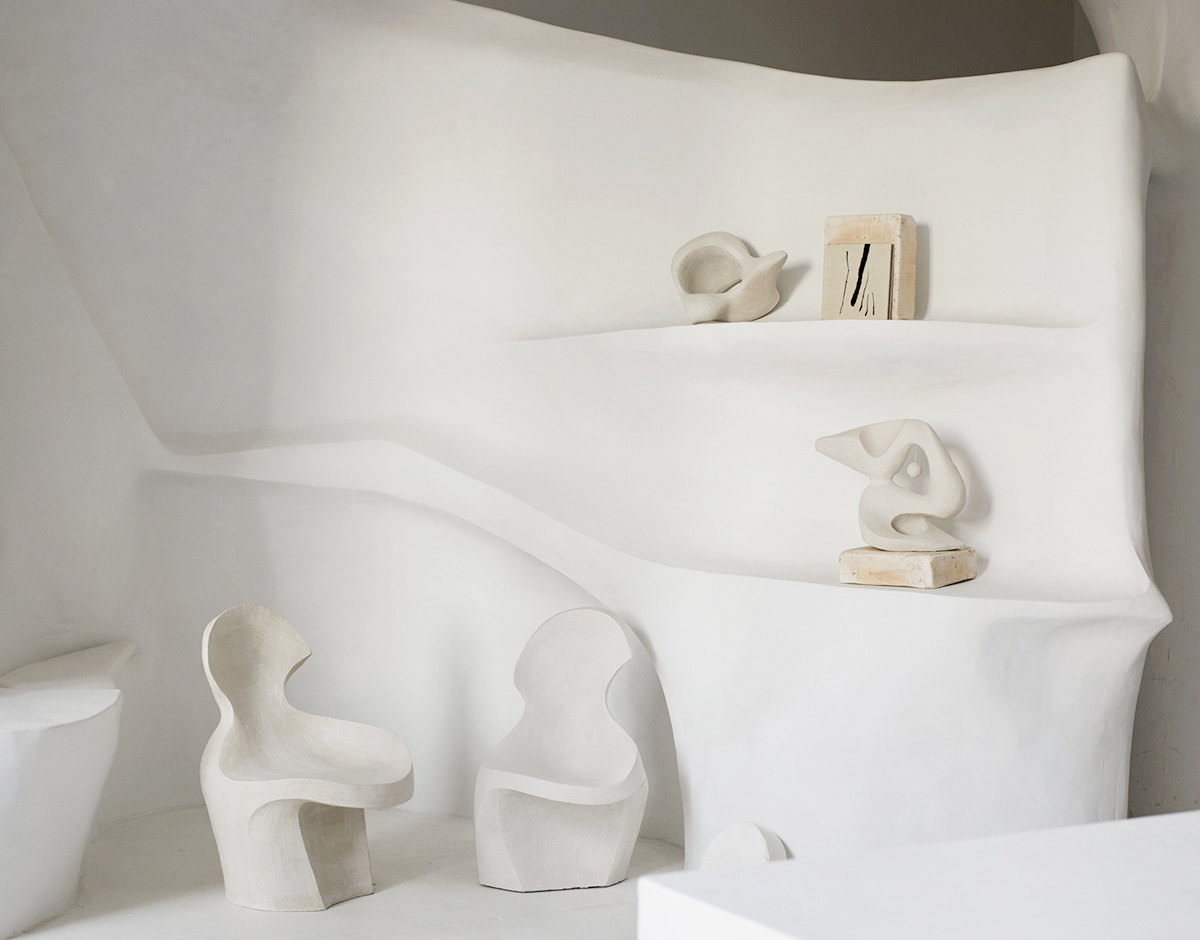
American Design Hot List 2020
Simone Bodmer Turner
Brooklyn, simonebodmerturner.com
A lot of designers right now are creating organically shaped, monochromatic vessels from clay, but something about Simone Bodmer Turner’s Valentine Schlegel–inspired pieces strikes a nerve. Bodmer Turner isn’t just designing, she’s world-building. And in her Brooklyn studio, her aesthetic extends all the way from the curved plaster walls to the furniture — a precursor, perhaps, to the ceramic furniture collection she’ll be launching next year.
What is American design to you and what excites you about it?
I’m really excited that there’s been a resurgence of interest in craft as a crucial component and extension of design in the last few years. More and more clients want to know the process of creating their piece and the history of the medium. This gives me a lot of hope that we are really connecting to the objects we surround ourselves with, and that people are making personal choices that resonate with their own stories. I also love seeing more designers keeping production in-house, or working with a small unit of skilled craftspeople to create their collections. This also feels like a re-centering of the personal, and staying small. Lastly, I get really inspired by seeing the walls between craft/design/and capital A art break down a bit. I love seeing designers dabble across them, as they are boundaries I’m also interested in pushing and re-defining in my work.
What are your plans and highlights for the upcoming year?
A lot of exciting new projects that smatter all over the areas we work across. We are currently tackling a residential project, our ceramic furniture will be going to market for the first time, and we have a couple of multidisciplinary collaborations that I’m really excited about, as well as prototyping some pieces in materials other than clay. In my personal work, I’m intending to really focus on getting back to traditional firing methods, and pushing myself out of my comfort zone in my sculpture and really examining surface.
What inspires you or informs your work in general?
In terms of process: Traditional craft and the art of hand-making objects and utilitarian pieces from natural materials available locally to you. In terms of aesthetic: biomorphic, fluid, forms that emanate the cavernous flowing qualities produced by erosion over time. Rocks, bones, shells. The playfulness of kinetic forms, the surprise element of hidden elements worked into furniture pieces.
